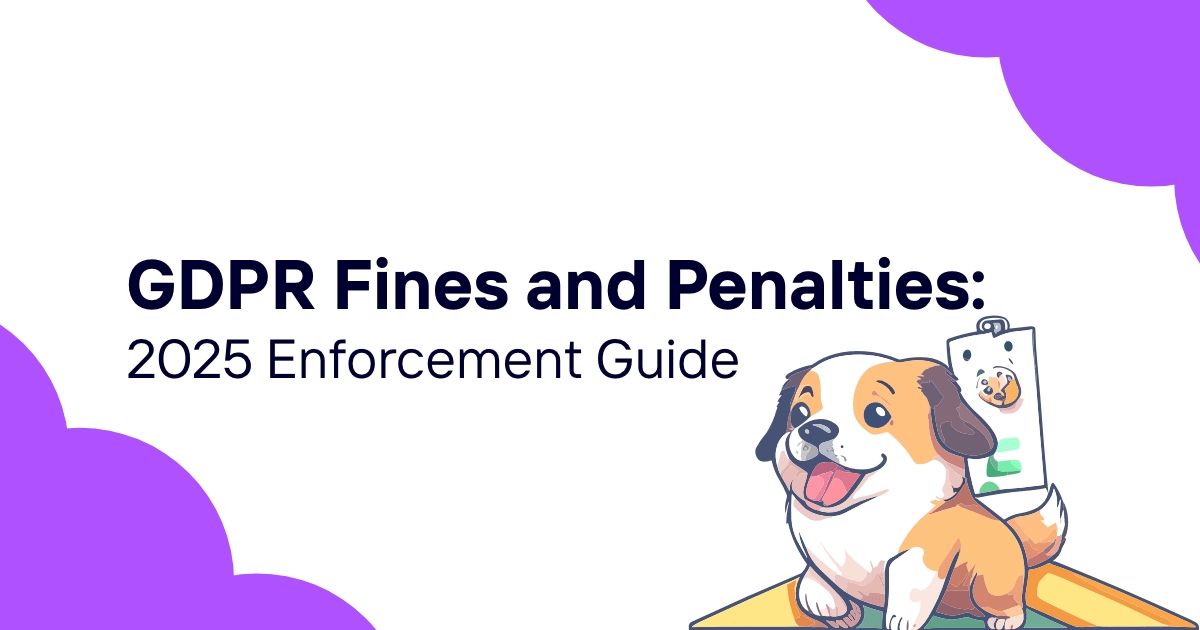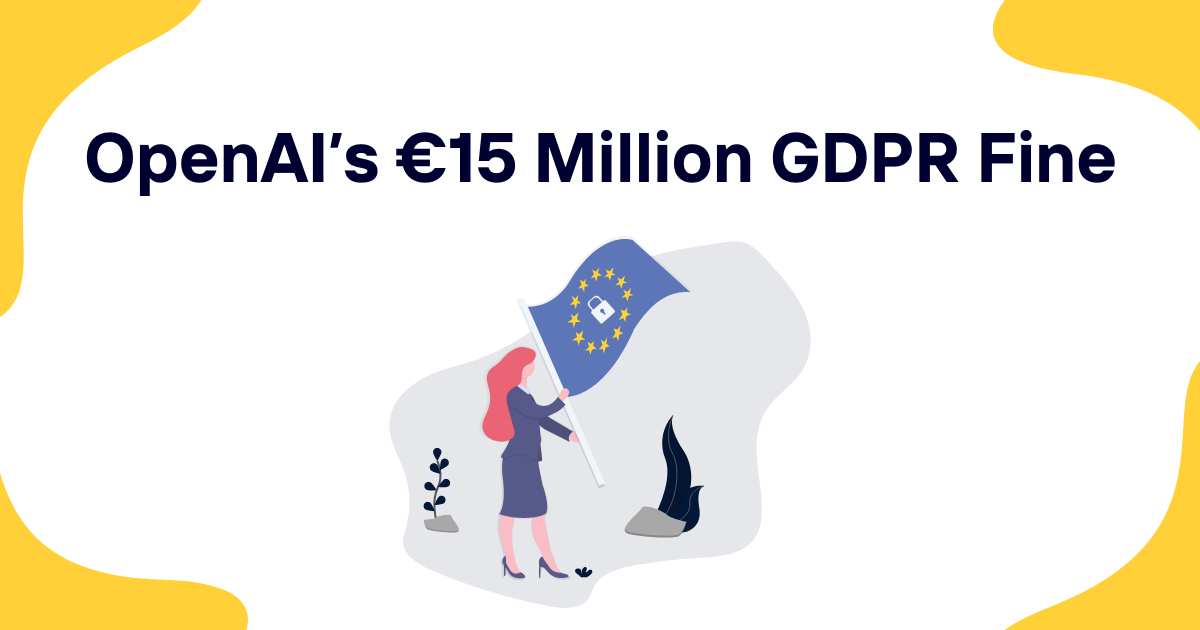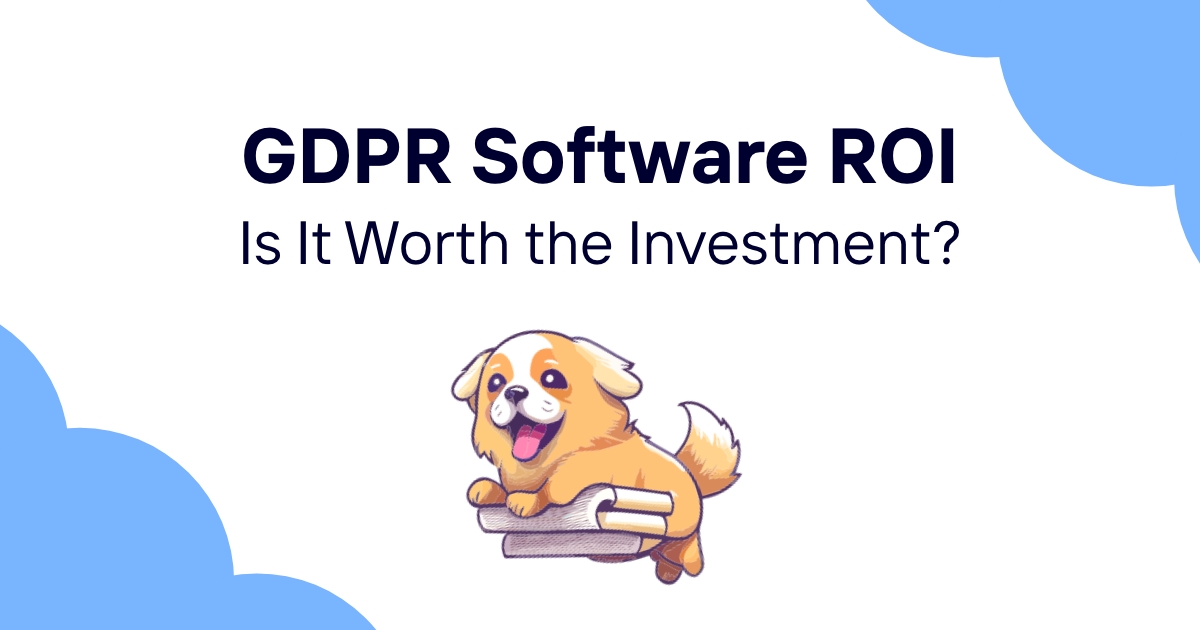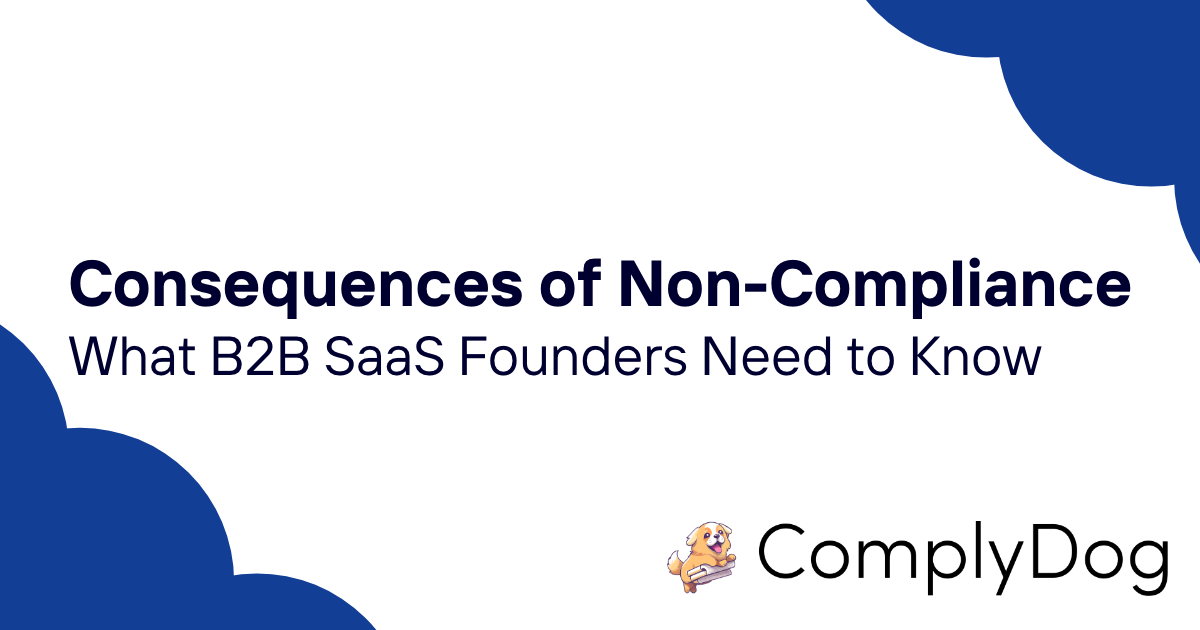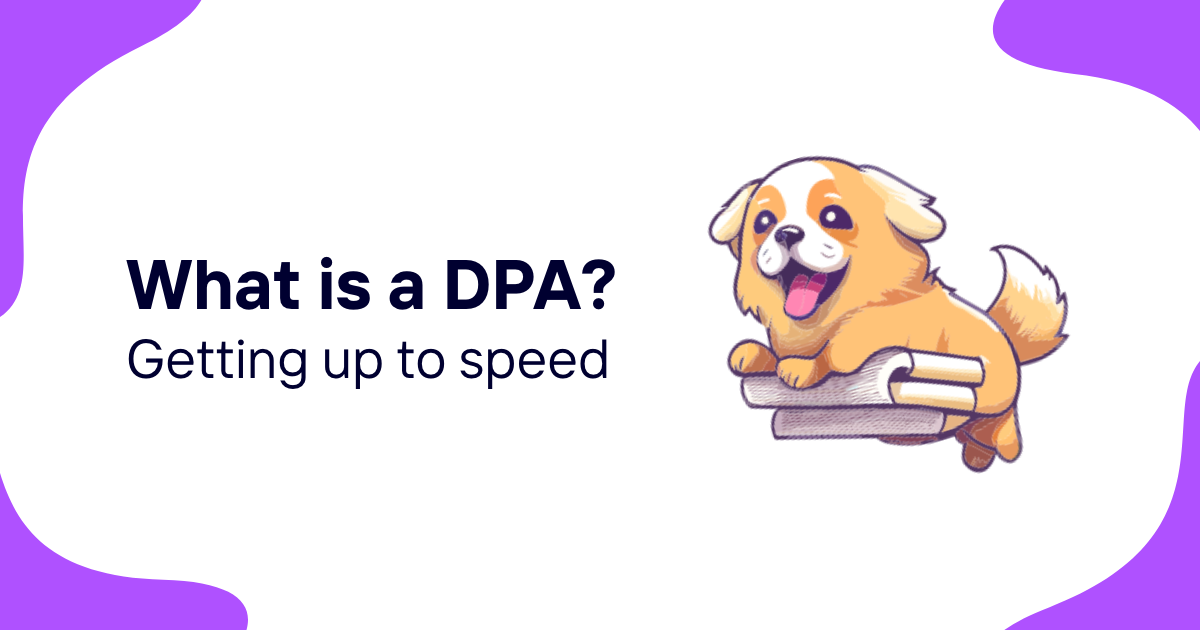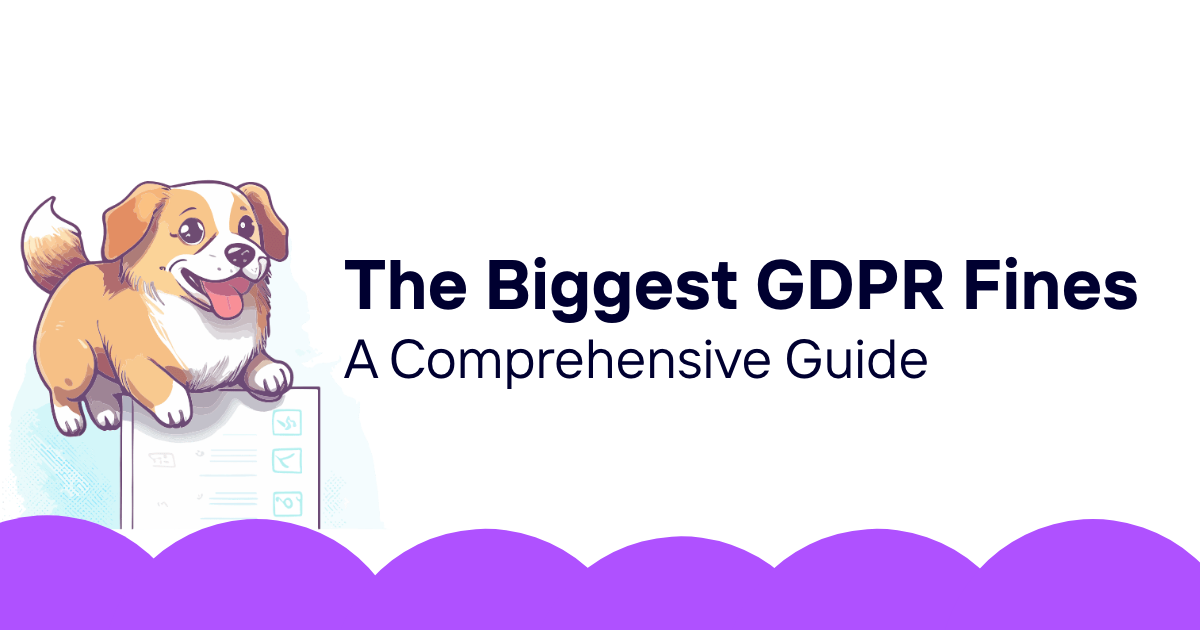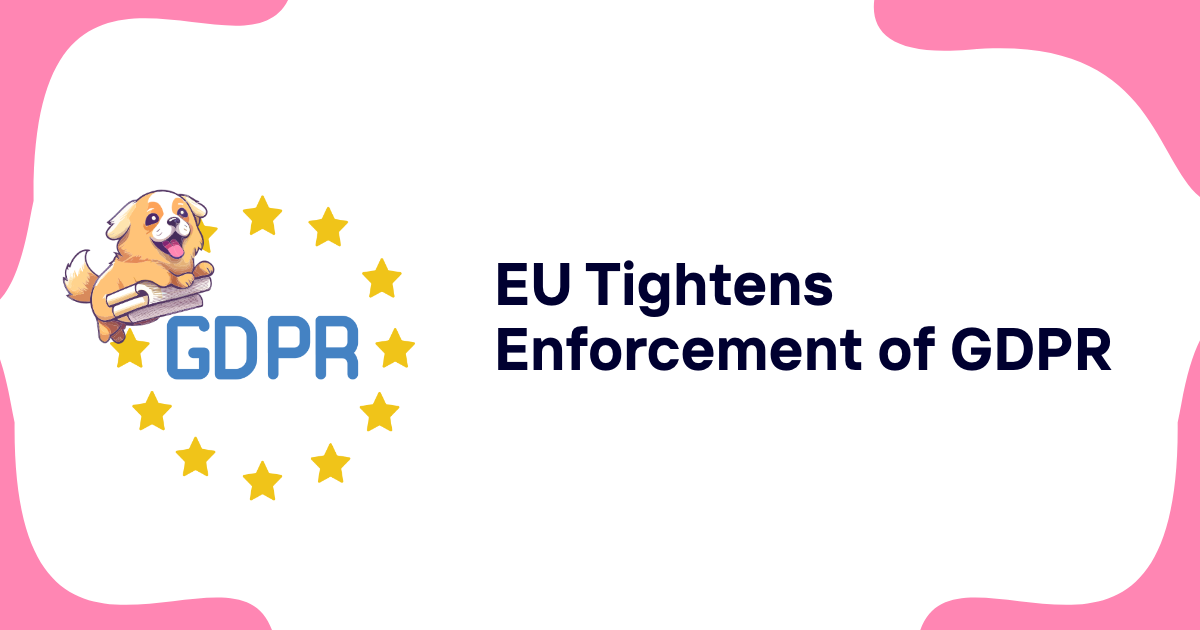GDPR enforcement has intensified significantly since its introduction, with data protection authorities issuing substantial fines that demonstrate the regulation's serious consequences for non-compliance. Understanding enforcement patterns, fine calculation methods, and prevention strategies is essential for organizations seeking to avoid costly penalties while building effective privacy programs.
This comprehensive enforcement guide analyzes GDPR fine trends, calculation methodologies, and regulatory approaches to help organizations understand compliance risks and implement effective prevention strategies. Learning from enforcement actions helps build stronger privacy programs that protect both individuals and business interests.
GDPR Fine Structure and Calculation
GDPR establishes a two-tier administrative fine structure with maximum penalties reaching up to 4% of annual global turnover, creating significant financial exposure for non-compliant organizations.
Two-Tier Fine Framework
GDPR Article 83 establishes different maximum fine levels based on violation severity:
Lower Tier Violations (Article 83(4)): Maximum fines of €10 million or 2% of annual worldwide turnover, whichever is higher, for violations including:
- Inadequate processing records (Article 30)
- Insufficient cooperation with supervisory authorities (Article 31)
- Inadequate security measures (Article 32)
- Failure to conduct or inadequate Data Protection Impact Assessments (Article 35)
- Failure to appoint required Data Protection Officers (Article 37)
Higher Tier Violations (Article 83(5)): Maximum fines of €20 million or 4% of annual worldwide turnover, whichever is higher, for violations including:
- Basic processing principles violations (Article 5)
- Unlawful processing or lack of legal basis (Article 6)
- Invalid consent collection (Article 7)
- Individual rights violations (Articles 12-22)
- Unlawful international data transfers (Articles 44-49)
Turnover Calculation Methods
Determining "annual worldwide turnover" for fine calculation purposes involves specific considerations:
Global Revenue Scope: Turnover includes all revenue from all business activities worldwide, not just EU operations or data processing-related revenue.
Consolidated Accounts: For corporate groups, turnover typically refers to consolidated group revenue rather than individual subsidiary revenue.
Temporal Scope: Usually based on the most recent complete financial year preceding the violation or fine decision.
Currency Conversion: Non-euro revenues are converted using appropriate exchange rates at relevant time periods.
Revenue Recognition: Following standard accounting principles for revenue recognition and financial reporting.
Fine Calculation Factors
GDPR Article 83(2) requires supervisory authorities to consider multiple factors when determining fine amounts:
Violation Severity: Nature, gravity, and duration of the violation, including the number of data subjects affected and level of damage suffered.
Intentionality: Whether the violation was intentional or negligent, with intentional violations typically receiving harsher penalties.
Mitigation Actions: Technical and organizational measures taken to mitigate damage to data subjects and reduce violation impact.
Compliance History: Previous infringements by the controller or processor and their compliance track record.
Cooperation Level: Degree of cooperation with supervisory authorities during investigation and resolution processes.
Affected Data Categories: Types of personal data involved in the violation, with special category data often resulting in higher fines.
Notification Compliance: Whether and how promptly the organization notified authorities about the violation or breach.
Administrative Order Adherence: Compliance with previous orders issued by supervisory authorities.
Economic Factors and Deterrence
Fine calculations must consider economic circumstances and deterrent effect:
Financial Circumstances: The organization's financial situation and ability to pay substantial fines.
Deterrent Effect: Ensuring fines are effective, proportionate, and dissuasive to prevent future violations.
Economic Benefits: Any financial benefits gained through non-compliance that might reduce deterrent effect if not addressed.
Market Position: Considering the organization's market position and competitive advantages that might affect fine impact.
Proportionality Principle: Ensuring fines are proportionate to the violation while achieving regulatory objectives.
Recent GDPR Enforcement Actions Analysis
Analyzing recent enforcement actions reveals patterns in regulatory priorities, fine calculation approaches, and compliance expectations that inform organizational risk management strategies.
High-Profile Enforcement Cases
Major enforcement actions demonstrate regulatory authorities' approach to serious violations:
Technology Platform Fines: Large technology companies have faced substantial fines for consent violations, data transfer issues, and transparency failures, with penalties often exceeding €100 million.
Healthcare Data Breaches: Healthcare organizations have received significant fines for security failures, particularly when sensitive health data is compromised through inadequate security measures.
Marketing Compliance Failures: Companies conducting direct marketing without proper consent or providing inadequate opt-out mechanisms have faced substantial penalties.
Cross-Border Transfer Violations: Organizations transferring personal data internationally without adequate safeguards have received major fines, particularly following Schrems II invalidation of Privacy Shield.
Transparency and Information Violations: Companies providing inadequate privacy information or using unclear consent mechanisms have faced enforcement action for transparency failures.
Sectoral Enforcement Patterns
Different industries show varying enforcement patterns and regulatory focus areas:
Technology Sector: Heavy focus on consent validity, data minimization, purpose limitation, and international transfer compliance.
Financial Services: Emphasis on data security, third-party processor management, and customer communication compliance.
Healthcare: Focus on data security, patient consent, and appropriate safeguards for sensitive health information.
Retail and E-commerce: Emphasis on marketing consent, customer data protection, and vendor management compliance.
Telecommunications: Focus on customer data protection, marketing practices, and data retention compliance.
Enforcement Trends and Evolution
Enforcement patterns continue evolving as regulatory authorities gain experience and establish precedents:
Increasing Fine Amounts: Overall trend toward larger fines as authorities become more confident in enforcement and seek stronger deterrent effects.
Faster Investigation Timelines: Authorities developing more efficient investigation processes leading to quicker enforcement actions.
Sector-Specific Guidance: Increased focus on developing sector-specific guidance and enforcement priorities.
Cross-Border Cooperation: Enhanced cooperation between EU supervisory authorities leading to coordinated enforcement actions.
Technology Focus: Increased attention to emerging technologies including AI, automated decision-making, and privacy-enhancing technologies.
Small and Medium Enterprise Enforcement
Enforcement actions increasingly target smaller organizations with proportionate but significant impacts:
Proportionate Penalties: Fines calculated to be significant for smaller organizations while remaining proportionate to their size and resources.
Compliance Education: Increased focus on education and guidance for SMEs to improve compliance before resorting to enforcement.
Sector-Specific Attention: Particular attention to high-risk sectors where SMEs handle sensitive data like healthcare and financial services.
Local Authority Coordination: National authorities increasingly coordinating with local business support organizations to improve SME compliance.
Prevention Focus: Emphasis on compliance assistance and prevention rather than purely punitive enforcement for smaller organizations.
As discussed in our right to be forgotten guide, individual rights violations, including inadequate erasure procedures, represent significant enforcement risks with substantial fine potential.
Factors Affecting Fine Amounts
Understanding specific factors that influence fine calculations helps organizations assess their risk exposure and prioritize compliance investments to minimize potential penalties.
Aggravating Factors
Certain circumstances typically result in higher fines and more severe enforcement action:
Willful Non-Compliance: Intentional violations or deliberate disregard for GDPR requirements typically result in maximum penalties.
Systematic Violations: Widespread or systematic compliance failures affecting multiple data subjects or processing activities.
Sensitive Data Involvement: Violations involving special category data, children's data, or other sensitive personal information.
Commercial Exploitation: Violations that directly generate revenue or competitive advantage through non-compliant data processing.
Authority Non-Cooperation: Failure to cooperate with supervisory authority investigations or attempts to obstruct regulatory processes.
Repeat Violations: Previous violations or continued non-compliance despite warnings or corrective orders.
Large-Scale Impact: Violations affecting large numbers of data subjects or causing significant harm to individuals.
Security Negligence: Inadequate security measures that lead to data breaches or unauthorized access to personal data.
Mitigating Factors
Certain actions and circumstances may reduce fine amounts or enforcement severity:
Voluntary Disclosure: Proactive disclosure of violations to supervisory authorities before external detection or complaint.
Rapid Remediation: Quick action to address violations and implement corrective measures to prevent recurrence.
Cooperation with Authorities: Full cooperation with investigations, providing requested information promptly and transparently.
Compliance Investment: Demonstrated investment in privacy programs, training, and compliance infrastructure.
Harm Minimization: Effective action to minimize harm to data subjects and prevent further damage from violations.
Technical Measures: Implementation of appropriate technical and organizational measures to protect personal data.
Staff Training: Comprehensive privacy training programs and awareness initiatives for staff at all levels.
Professional Advice: Evidence of seeking and following professional legal and privacy advice for compliance decisions.
Economic Considerations
Supervisory authorities consider various economic factors when calculating appropriate fine amounts:
Financial Capacity: Organization's ability to pay fines without causing disproportionate economic hardship or business failure.
Revenue Attribution: Considering what portion of revenue relates to EU operations or data processing activities.
Market Position: Competitive position and market power that might affect fine impact and deterrent effectiveness.
Economic Benefits: Financial benefits gained through non-compliance that must be eliminated to ensure effective deterrence.
Investment Requirements: Costs of achieving compliance and implementing necessary technical and organizational measures.
Proportionality Assessment
Ensuring fines are proportionate requires balancing multiple considerations:
Violation Scale: Matching fine severity to violation scale and impact on data subjects and regulatory compliance.
Deterrent Effectiveness: Ensuring fines are sufficient to deter future violations by the organization and others in similar situations.
Regulatory Consistency: Maintaining consistency with similar cases and regulatory precedents while accounting for specific circumstances.
Economic Impact: Avoiding fines that would cause disproportionate economic disruption while maintaining deterrent effect.
Public Interest: Considering broader public interest in compliance and privacy protection when determining appropriate penalties.
Industry-Specific Fine Trends
Different industries face varying enforcement patterns and fine risks based on their data processing activities, regulatory focus areas, and compliance challenges.
Technology and Digital Services
Technology companies face intensive regulatory scrutiny with significant fine risks:
Consent Management: Major fines for invalid consent collection, unclear consent mechanisms, and inadequate consent withdrawal procedures.
Data Minimization: Penalties for collecting excessive personal data or processing data beyond necessary purposes.
Transparency Failures: Fines for inadequate privacy policies, unclear data processing disclosures, and insufficient user information.
Cross-Border Transfers: Substantial penalties for unlawful international data transfers, particularly following Schrems II invalidation of adequacy mechanisms.
Algorithmic Decision-Making: Increasing enforcement focus on automated processing, profiling, and AI systems affecting individuals.
Financial Services
Financial institutions face sector-specific enforcement patterns and compliance expectations:
Customer Data Security: Major fines for security breaches affecting customer financial data and inadequate security measures.
Third-Party Management: Penalties for inadequate oversight of vendors and processors handling customer financial information.
Marketing Compliance: Fines for non-compliant marketing practices, inadequate consent for promotional communications, and unclear opt-out procedures.
Data Retention: Enforcement actions for retaining customer data longer than necessary or failing to implement appropriate deletion procedures.
Cross-Border Compliance: Penalties for international data transfers without adequate safeguards, particularly for global financial institutions.
Healthcare and Life Sciences
Healthcare organizations face unique enforcement risks related to sensitive health data:
Patient Data Security: Substantial fines for security breaches involving patient health information and inadequate technical safeguards.
Consent Management: Penalties for inadequate patient consent processes, particularly for secondary uses of health data.
Research Compliance: Enforcement actions for non-compliant health research activities and inadequate participant protections.
Vendor Oversight: Fines for inadequate management of healthcare technology vendors and business associates.
Data Sharing: Penalties for inappropriate sharing of patient data with third parties without proper safeguards or consent.
Retail and E-commerce
Retail organizations face specific compliance challenges that result in enforcement actions:
Customer Profiling: Fines for excessive customer profiling, behavioral tracking, and automated decision-making without appropriate safeguards.
Marketing Consent: Penalties for non-compliant email marketing, inadequate consent collection, and difficult unsubscribe procedures.
Payment Data Security: Enforcement actions for inadequate protection of customer payment information and security breaches.
Vendor Management: Fines for inadequate oversight of e-commerce platforms, payment processors, and marketing technology vendors.
Data Retention: Penalties for retaining customer data longer than necessary for business purposes or legal requirements.
As outlined in our Data Protection Officer guide, organizations required to appoint DPOs face additional enforcement risks if they fail to meet appointment obligations or provide adequate DPO support.
Geographic Enforcement Variations
GDPR enforcement varies significantly across EU member states, with different supervisory authorities showing varying approaches to investigation, penalty calculation, and compliance assistance.
Leading Enforcement Jurisdictions
Certain supervisory authorities have emerged as particularly active in GDPR enforcement:
Ireland (DPC): Handles many major technology company cases due to Irish headquarters of global platforms, resulting in some of the largest GDPR fines.
France (CNIL): Active enforcement across multiple sectors with significant fines for technology companies, retailers, and service providers.
Germany (Various State Authorities): Substantial enforcement activity with particular focus on data security, consent management, and business compliance.
Italy (Garante): Increasing enforcement activity with focus on transparency, consent, and data subject rights compliance.
Netherlands (AP): Strategic enforcement approach with emphasis on systematic compliance issues and privacy by design.
Enforcement Philosophy Differences
Different supervisory authorities emphasize different aspects of GDPR enforcement:
Deterrent-Focused Approaches: Some authorities prioritize high-visibility enforcement actions with substantial fines to deter widespread non-compliance.
Education-First Strategies: Other authorities emphasize compliance assistance and education before resorting to enforcement action.
Sector-Specific Focus: Certain authorities concentrate enforcement efforts on particular sectors where they have expertise or see highest risks.
Cross-Border Coordination: Varying levels of engagement with cross-border enforcement mechanisms and cooperation with other authorities.
Innovation-Friendly Approaches: Some authorities balance enforcement with support for technological innovation and business development.
One-Stop-Shop Mechanism
GDPR's one-stop-shop mechanism affects enforcement jurisdiction and coordination:
Lead Authority Designation: Lead supervisory authorities handle cases for organizations with EU main establishments, affecting enforcement approach and timeline.
Cross-Border Cooperation: Coordination requirements between authorities can affect investigation speed and enforcement consistency.
Consistency Mechanism: European Data Protection Board consistency mechanisms influence enforcement decisions and fine calculation approaches.
Appeal Procedures: Different national appeal procedures and judicial review processes affect enforcement finality and organization options.
Implementation Variations: National implementation differences create varying enforcement procedures and penalty calculation methods.
Regulatory Guidance and Interpretation
Supervisory authorities provide varying levels of guidance that affect compliance expectations:
Detailed Guidance: Some authorities provide extensive guidance documents, decision summaries, and compliance assistance materials.
Case Law Development: Enforcement decisions create precedents that influence future compliance expectations and enforcement patterns.
Industry Engagement: Varying levels of industry engagement and consultation on compliance interpretation and implementation.
International Coordination: Different approaches to international cooperation and coordination with non-EU authorities and organizations.
Resource Allocation: Varying resource allocation to enforcement versus guidance and education activities.
Fine Prevention Strategies
Effective GDPR compliance requires proactive strategies that address enforcement risks while building sustainable privacy programs that support business objectives.
Comprehensive Compliance Programs
Building systematic compliance programs reduces enforcement risks across all GDPR requirements:
Privacy by Design: Implementing privacy considerations into all business processes, system designs, and decision-making procedures from the beginning.
Risk Assessment: Regular privacy risk assessments that identify potential compliance gaps and prioritize remediation efforts.
Policy Development: Comprehensive privacy policies and procedures that address all GDPR requirements and provide clear implementation guidance.
Training Programs: Regular privacy training for all staff with specialized training for roles involving personal data processing.
Compliance Monitoring: Ongoing monitoring systems that track compliance performance and identify potential issues before they become violations.
Proactive Regulatory Engagement
Building positive relationships with supervisory authorities can reduce enforcement risks:
Voluntary Consultation: Seeking guidance from authorities on complex compliance questions before implementing potentially risky practices.
Transparency: Maintaining open communication about compliance challenges and seeking authority input on resolution strategies.
Industry Participation: Participating in authority consultation processes and industry working groups to influence guidance development.
Best Practice Sharing: Contributing to best practice development and sharing successful compliance approaches with authorities and peers.
Early Notification: Promptly notifying authorities about potential violations or compliance concerns to demonstrate good faith compliance efforts.
Incident Response Preparation
Effective incident response can significantly reduce fine risks when violations occur:
Response Procedures: Comprehensive incident response procedures that ensure rapid detection, containment, and resolution of privacy incidents.
Authority Notification: Clear procedures for timely notification of supervisory authorities when required by GDPR breach notification requirements.
Stakeholder Communication: Effective communication strategies for internal stakeholders, affected individuals, and external partners during incident response.
Evidence Preservation: Appropriate evidence preservation procedures that support investigation and demonstrate compliance efforts.
Remediation Planning: Systematic approaches to addressing violations and implementing corrective measures to prevent recurrence.
Documentation and Accountability
Comprehensive documentation demonstrates compliance efforts and can reduce enforcement severity:
Processing Records: Detailed records of processing activities as required by GDPR Article 30 and additional documentation supporting compliance decisions.
Decision Documentation: Clear documentation of privacy-related decisions including rationale, alternatives considered, and risk assessments.
Training Records: Comprehensive records of privacy training activities and staff competency assessments.
Vendor Management: Detailed documentation of vendor privacy assessments, contract negotiations, and ongoing compliance monitoring.
Audit Activities: Regular internal audits and external assessments that demonstrate ongoing compliance commitment and improvement efforts.
As discussed in our cookie consent banner guide, proper implementation of consent mechanisms can prevent significant enforcement actions related to invalid consent collection and processing.
Regulatory Authority Approaches
Understanding different supervisory authority approaches to enforcement helps organizations adapt their compliance strategies to jurisdictional expectations and regulatory priorities.
Investigation Methodologies
Supervisory authorities use various approaches to investigate potential GDPR violations:
Complaint-Driven Investigations: Responding to individual complaints with investigations focused on specific alleged violations and their broader organizational context.
Proactive Audits: Systematic audits of organizations or sectors to assess compliance and identify widespread issues requiring attention.
Breach Follow-Up: Detailed investigations following data breach notifications to assess adequacy of security measures and incident response.
Cross-Border Coordination: Coordinated investigations involving multiple supervisory authorities for organizations with cross-border operations.
Thematic Reviews: Sector-specific or technology-focused reviews that examine compliance across multiple organizations in similar circumstances.
Enforcement Escalation
Authorities typically follow escalation procedures that provide opportunities for compliance improvement:
Informal Guidance: Initial contact through informal guidance and compliance assistance before formal enforcement action.
Formal Warnings: Official warnings that document compliance concerns and provide opportunities for voluntary correction.
Corrective Orders: Formal orders requiring specific compliance actions within defined timeframes before monetary penalties.
Administrative Fines: Monetary penalties imposed after other measures prove insufficient or for serious violations requiring immediate deterrent action.
Processing Bans: Temporary or permanent prohibitions on specific processing activities for serious or continued violations.
Cooperative Resolution
Many authorities prefer cooperative resolution approaches that achieve compliance while minimizing adversarial proceedings:
Compliance Agreements: Negotiated agreements that establish compliance commitments and monitoring procedures in lieu of formal penalties.
Voluntary Commitments: Organization-initiated compliance commitments that address authority concerns and demonstrate good faith efforts.
Settlement Procedures: Formal settlement processes that resolve enforcement actions through agreed compliance measures and appropriate penalties.
Monitoring Agreements: Ongoing monitoring arrangements that verify compliance implementation and prevent future violations.
Public Reporting: Transparency measures that demonstrate compliance improvements while maintaining organization reputation.
Authority Resources and Priorities
Supervisory authority resources and priorities affect enforcement approach and timing:
Resource Constraints: Limited investigative resources require prioritization of cases based on impact, precedent value, and compliance significance.
Expertise Development: Building specialized expertise in emerging technologies and complex compliance areas affects enforcement focus and capabilities.
Political Priorities: National and EU political priorities influence authority focus areas and enforcement intensity.
Industry Coordination: Coordination with other regulatory authorities affects privacy enforcement integration with broader regulatory oversight.
International Cooperation: Cross-border cooperation requirements affect investigation timelines and enforcement coordination complexity.
Post-Fine Compliance Requirements
Organizations receiving GDPR fines must implement comprehensive remediation measures to address underlying compliance failures and demonstrate ongoing commitment to privacy protection.
Immediate Remediation Obligations
Fine decisions typically include specific remediation requirements that organizations must implement promptly:
Corrective Actions: Specific actions required to address the violations that led to fine imposition, often with defined timelines and success criteria.
Process Improvements: Systematic improvements to business processes that caused or contributed to compliance failures.
Technical Measures: Implementation of specific technical safeguards or system modifications to prevent similar violations.
Training Requirements: Additional staff training or education programs to address knowledge gaps that contributed to violations.
Reporting Obligations: Regular reporting to supervisory authorities about remediation progress and compliance improvements.
Compliance Monitoring
Ongoing monitoring ensures sustained compliance and prevents repeat violations:
Regular Audits: Internal or external audits that verify compliance improvements and identify potential new issues.
Performance Metrics: Compliance metrics and key performance indicators that track privacy program effectiveness.
Incident Reporting: Enhanced incident detection and reporting procedures that ensure prompt identification and resolution of compliance issues.
Stakeholder Engagement: Regular engagement with supervisory authorities and other stakeholders about compliance status and improvements.
Continuous Improvement: Systematic approaches to identifying and implementing ongoing compliance improvements.
Reputation Management
Post-fine reputation management requires strategic communication and demonstrated compliance commitment:
Stakeholder Communication: Clear communication to customers, partners, and stakeholders about violations, remediation efforts, and compliance improvements.
Public Commitments: Public commitments to privacy protection and compliance excellence that demonstrate organizational learning and improvement.
Transparency Reports: Regular transparency reporting about privacy practices, compliance metrics, and continuous improvement efforts.
Industry Leadership: Taking leadership roles in privacy best practice development and industry compliance initiatives.
Compliance Certification: Pursuing independent compliance certifications and assessments that verify privacy program effectiveness.
Long-Term Compliance Strategy
Sustained compliance requires strategic approaches that embed privacy protection throughout organizational operations:
Cultural Change: Developing privacy-protective organizational cultures that prioritize compliance and individual rights protection.
Governance Integration: Integrating privacy considerations into broader governance frameworks and decision-making processes.
Investment Planning: Long-term investment in privacy technologies, expertise, and organizational capabilities.
Risk Management: Comprehensive privacy risk management that identifies and addresses emerging compliance challenges.
Innovation Alignment: Ensuring new business initiatives and technological innovations include appropriate privacy considerations and protections.
Building effective GDPR compliance requires understanding enforcement realities while implementing comprehensive privacy programs that go beyond minimum regulatory requirements. The most successful approaches treat compliance as a business enabler that builds customer trust and competitive advantage rather than merely avoiding penalties.
For organizations seeking to build comprehensive compliance programs that effectively prevent enforcement risks while supporting business objectives, systematic approaches often provide better protection than reactive strategies focused solely on penalty avoidance.
Ready to build comprehensive GDPR compliance that effectively prevents enforcement risks while supporting business growth? Use ComplyDog and get integrated privacy management that addresses all major compliance requirements, provides ongoing risk monitoring, and includes expert guidance to help build sustainable privacy programs that protect against enforcement action while enabling business success and customer trust.
